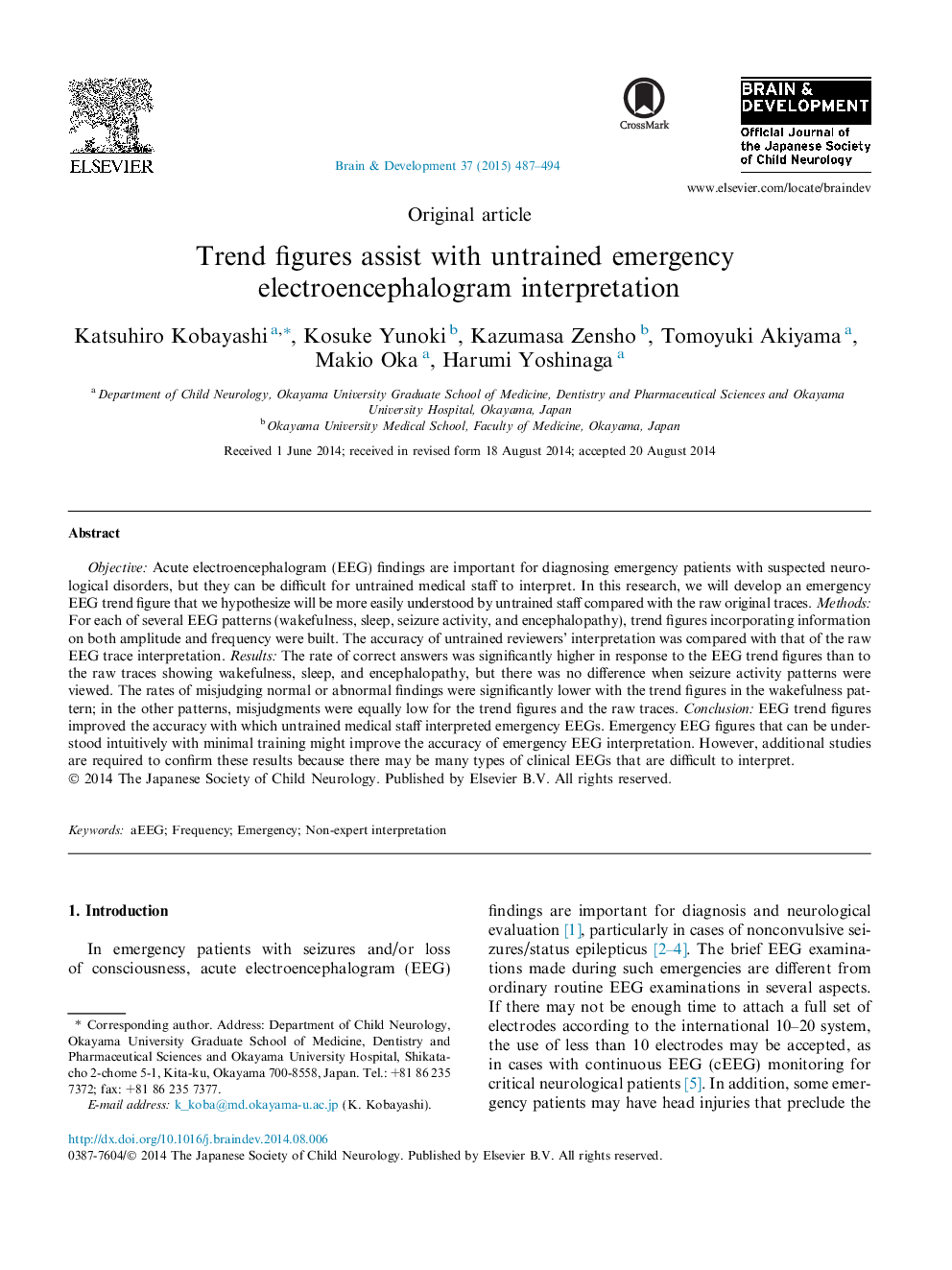| کد مقاله | کد نشریه | سال انتشار | مقاله انگلیسی | نسخه تمام متن |
|---|---|---|---|---|
| 3036659 | 1184380 | 2015 | 8 صفحه PDF | دانلود رایگان |
Objective: Acute electroencephalogram (EEG) findings are important for diagnosing emergency patients with suspected neurological disorders, but they can be difficult for untrained medical staff to interpret. In this research, we will develop an emergency EEG trend figure that we hypothesize will be more easily understood by untrained staff compared with the raw original traces. Methods: For each of several EEG patterns (wakefulness, sleep, seizure activity, and encephalopathy), trend figures incorporating information on both amplitude and frequency were built. The accuracy of untrained reviewers’ interpretation was compared with that of the raw EEG trace interpretation. Results: The rate of correct answers was significantly higher in response to the EEG trend figures than to the raw traces showing wakefulness, sleep, and encephalopathy, but there was no difference when seizure activity patterns were viewed. The rates of misjudging normal or abnormal findings were significantly lower with the trend figures in the wakefulness pattern; in the other patterns, misjudgments were equally low for the trend figures and the raw traces. Conclusion: EEG trend figures improved the accuracy with which untrained medical staff interpreted emergency EEGs. Emergency EEG figures that can be understood intuitively with minimal training might improve the accuracy of emergency EEG interpretation. However, additional studies are required to confirm these results because there may be many types of clinical EEGs that are difficult to interpret.
Journal: Brain and Development - Volume 37, Issue 5, May 2015, Pages 487–494
